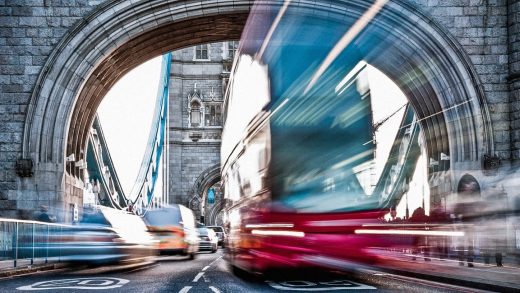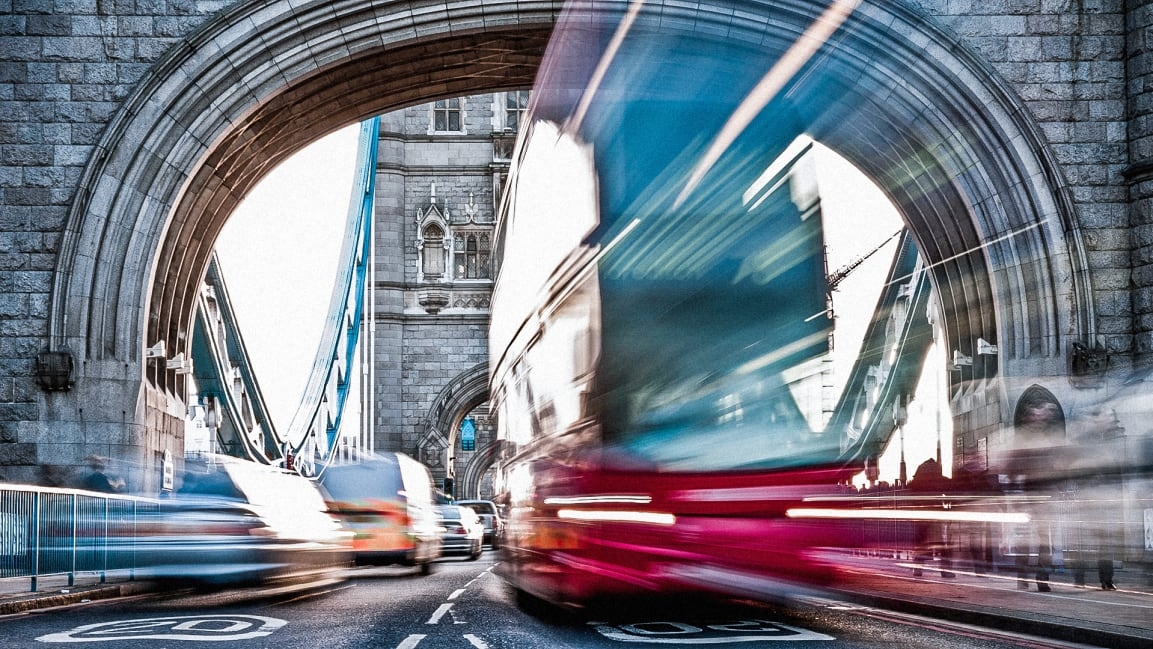Polluting cars now have to pay to drive within 140 square miles of London
Since April 2019, an eight-square mile area in Central London has been deemed an “ultra-low emissions zone,” requiring all drivers traveling on those roads to meet strict vehicle emissions standards, or else pay a daily fee for their polluting cars and trucks. It was a step toward cleaning up London’s dirty air—and it worked, taking an average of 44,000 polluting vehicles off those roads every day. Now, the city is expanding that ultra low emissions zone to 140 square miles, roughly 18 times its current size.
Before its expansion, and even before COVID-19 lockdowns, the Ultra-Low Emissions Zone, or ULEZ, reduced levels of nitrogen dioxide—an air pollutant that prominently comes from combustion engines burning fuel, and which has been linked to asthma and other respiratory diseases—in that area by 44%. Andrea Lee, campaigns and policy manager for the clean air team at ClientEarth, an environmental law charity, calls the ULEZ expansion, which officially goes into effect October 25, a “lifeline for the health of Londoners.”
According to 2018 data, poor air quality contributed to 9,400 premature deaths in London every year. At the end of 2020, a London coroner made history by ruling that air pollution, along with severe asthma, were the causes of death for nine-year-old Ella Kissi-Debrah, who died in 2013. The coroner’s report specified that exposure to nitrogen dioxide and fine particulate matter known as PM2.5, both from traffic emissions, contributed to her death.
“That’s a very extreme impact of the pollutants we’re looking at, but it does show you how it does make a real difference on people’s lives and the families of people who are being affected,” Lee says. “That’s why we see it as a real lifeline.” ClientEarth has made multiple legal challenges against the UK government for failing to take actions to reduce air pollution below legal limits (and the UK’s legal limits for some types of air pollution are still twice as high as what the World Health Organization recommends) before the ULEZ was put into effect, and continues to push for more action.
The expansion, which stretches into the suburbs of the city, covers an area in which more than 3.5 million people live, and will make London’s ULEZ the largest clean air zone in Europe, Lee says. Other cities have been implementing similar zones, including Brussels, which has a 62-square mile low emissions zone and recently announced plans to completely ban diesel cars by 2030 and gas cars by 2035 for what Lee calls a “zero emissions zone.”
To some, traffic and pollution are just part of living in a city, but policies like low emissions zones and congestion pricing are challenging that notion. “A lot of people think, ‘I live in a city, in an urban area, it’s just going to be dirty, I’ll just live with it.’ It doesn’t have to be like this,” Lee says. “We have solutions, and we can be cleaning up dirty air.” In 2016, air pollution became a major issue in the London mayoral election, which ultimately saw Mayor Sadiq Khan, who pushed for the ULEZ to be implemented earlier than initially planned, take office.
But beyond personal support for low-emissions zones, Lee notes that there need to be alternatives for people to get around, including more investment in public transit and ways for people to bike and walk around the city. Revenue from vehicles that are fined for driving in the ULEZ is earmarked for improving transport in London. The city also implemented “scrappage schemes” to help people get rid of their older, polluting vehicles, so that they can meet emissions standards.
Though Lee praises the city for expanding the ULEZ, she adds that it still isn’t enough to address the air pollution problem. Since it doesn’t cover the entire city, there will still be “hotspots” of toxic air; transportation as a whole still needs to be decarbonized, she says. “There’s basically no safe level of air pollution,” Lee says, “but we need to strive to make sure we’re reducing emissions and cleaning up the air as much as we can to really protect people’s health.”
(50)



